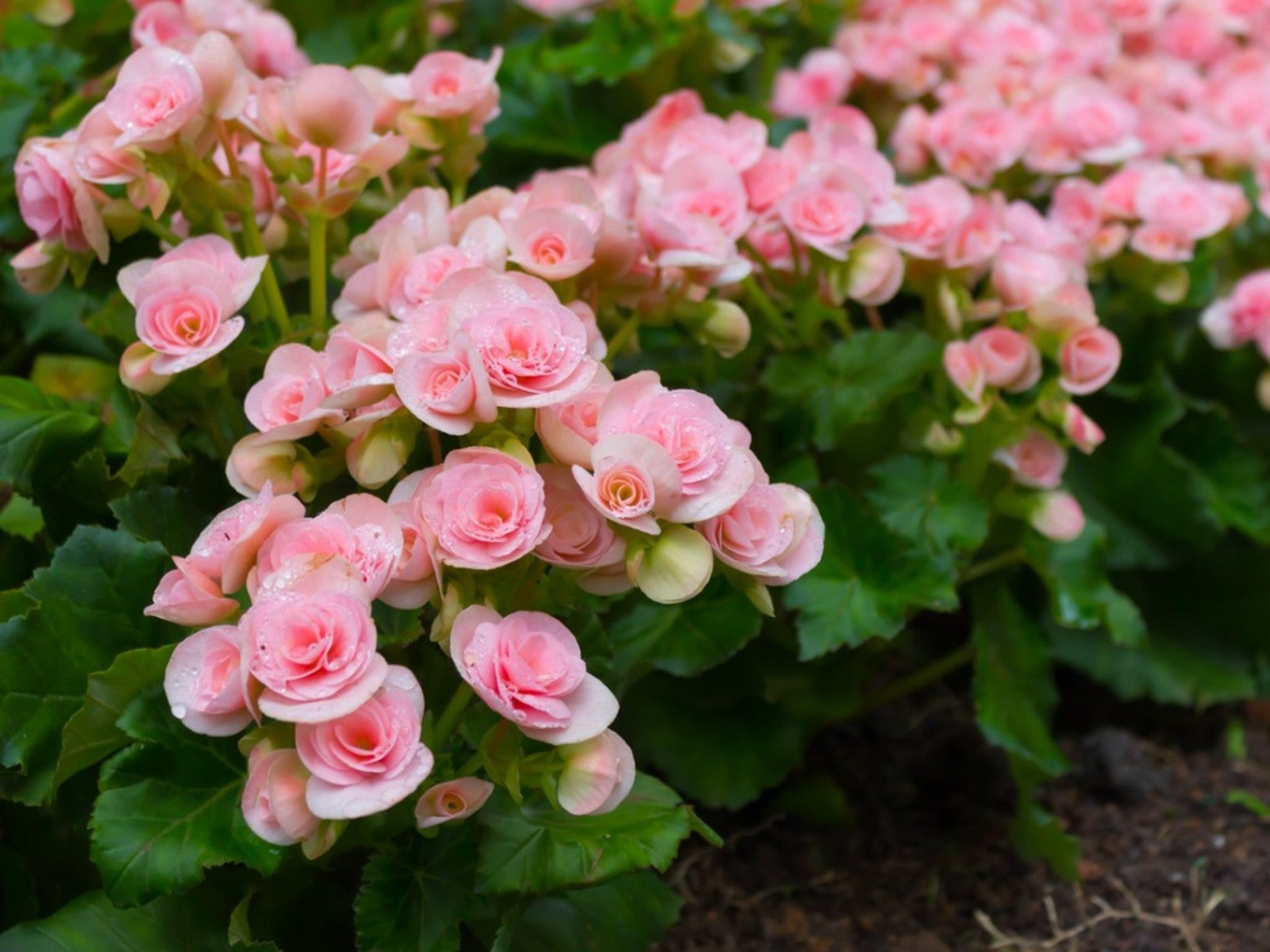Tuberous Begonia Care - How To Grow Tuberous Begonias


If you can't decide what to plant in that protected, semi-shady corner, you can't go wrong with tuberous begonia. However, tuberous begonia isn't a plant-it-and-forget-it plant. Keeping the plant alive and healthy requires a bit of extra attention. Read on for some tuberous begonia growing tips.
What is a Tuberous Begonia?
Types of tuberous begonias include upright or trailing varieties with single, double, or ruffled blooms in tropical shades of pink, yellow, orange, red, and white. The gold, purple, green, or burgundy leaves are nearly as attractive as the flowers.
Tuberous begonias are frost-tender. If you live in USDA plant hardiness zone 10 and above, you can grow tuberous begonias outdoors year-round. Otherwise, you'll need to dig the tubers and store them during the winter.
How to Grow Tuberous Begonias
Although tuberous begonias are shade-loving plants, they also require a bit of morning or late afternoon sunlight. A location in dappled or filtered light also works well, but the plants won't survive midday sun or heat. Begonias need moist, well-drained soil and are likely to rot in soggy conditions.
Tuberous begonias are available at most garden centers at spring planting time. However, you can also purchase tubers and plant them indoors six to eight weeks before the last expected frost date in your area.
Place the tubers an inch (2.5 cm) apart, hollow side up, in a shallow tray filled with moist potting mix and sand. Store the tray in a dark room where the temperature is about 65 degrees F (18 C). Water just enough to keep the potting mix moist. Watch for the tubers to sprout in about a month.
Plant each tuber into a pot when the shoots are about an inch (2.5 cm) long, then move the pots to bright light. You may need supplemental light to prevent the plants from becoming spindly.
Sign up for the Gardening Know How newsletter today and receive a free copy of our e-book "How to Grow Delicious Tomatoes".
Plant the begonias outdoors when you're sure all danger of frost has passed.
Tuberous Begonia Care
Water the plants regularly to keep the potting soil slightly moist. Provide a balanced, water-soluble fertilizer monthly during the growing season. Be sure to provide plenty of air circulation to prevent powdery mildew.
Use a sharp knife to cut spent blooms as soon as they fade.
Cut back on water in late summer, then dig the tubers when the foliage begins to turn yellow. Place each tuber in a small paper bag and store the bags in a cardboard box. Room temperatures for storage should be between 40 and 50 degrees F (4-10 C).
Check the tubers occasionally and discard any that are soft or rotten. Replant the tuberous begonias in spring.

A Credentialed Garden Writer, Mary H. Dyer was with Gardening Know How in the very beginning, publishing articles as early as 2007.